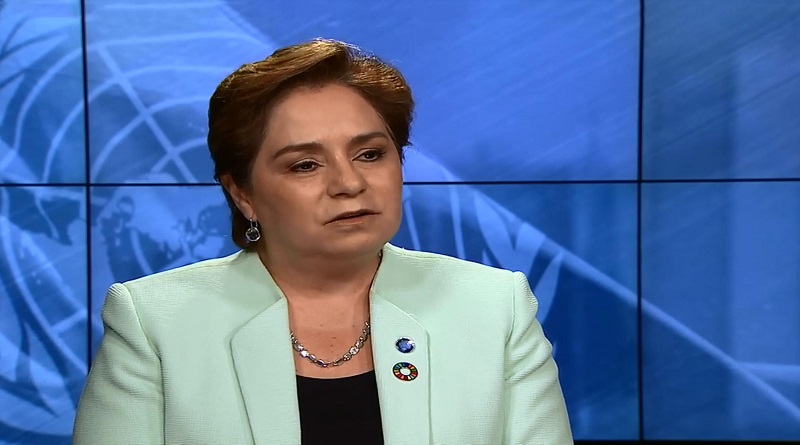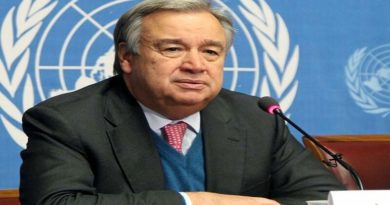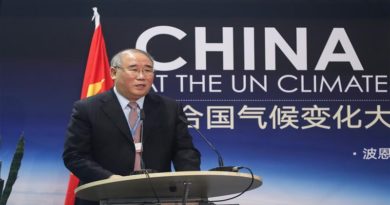Global Stocktake: Spurring countries to step up climate action
If the core of the Paris Agreement is its focus on continuously ratcheting up ambition on climate action, then the pact’s global stocktake is a key lever to make that happen.
That was the main message of a special awareness-raising event organized by UN Climate Change at the Middle East and North Africa Climate Week in Dubai. The event helped clarify the global stocktake and underscore its importance as one of the centerpieces of the Paris Agreement’s ambition mechanism.
In a nutshell, the global stocktake is designed to ‘take stock’ of the implementation of the Paris Agreement and assess progress towards achieving the pact’s goal to limit global warming to 1.5 degrees Celsius. The first stocktake got underway at the UN Climate Change Conference in Glasgow last November (COP 26) and will conclude at COP 28 in 2023. Each stocktake is a two-year process that happens every five years.
“The global stocktake will provide critical information for countries and stakeholders to see what progress has been made on meeting the Paris Agreement goals, as well as identify any remaining gaps and opportunities for increased action,” said Joanna Post, Programme Officer with UN Climate Change’s Intergovernmental Support and Collective Progress Division. “To put it simply – the global stocktake will help spur countries to step up climate action to avoid the worst impacts of climate change.”
The Paris Agreement calls on each country to set its own plan to cut emissions and adapt to climate impacts. It also established a process for countries to continually strengthen their national climate plans. These national climate change plans are formally known as Nationally Determined Contributions (NDCs).
To hold themselves accountable, countries agreed to regularly report on and review their individual efforts and to take stock of their collective progress. The Paris Agreement created the global stocktaking process, which follows a five-year cycle.
The global stocktake will help national governments see what they have achieved so far in implementing their climate plans, identify what still needs to be done to meet their targets, and highlight opportunities to increase their ambition on climate action.
The global stocktake is critically important because the international community has yet to live up to its commitments and climate action has yet to reflect deep transformations needed across all sectors to build a resilient future.
Last year’s NDC Synthesis Report confirmed that the world is still far off the trajectory of stabilizing global temperature rise at 1.5 degrees. The report shows the available NDCs of all 192 Parties taken together will result in a sizable increase in global greenhouse emissions in 2030, compared to 2010, of about 16%. The latest findings by the Intergovernmental Panel on Climate Change show that such an increase, unless changed quickly, may lead to a temperature rise of about 2.7°C by the end of the century.
The report underlines why more ambitious climate action is urgently needed. That’s why the global stocktake is a critical part of the equation, explained Post.
“National governments are expected to use the outcomes of the global stocktake when developing and updating their climate plans,” said Post. “The ultimate aim of the global stocktake is to become a driver of climate ambition.”
Phase 1 is all about collecting and preparing information. This is underway now and runs until early next year. UN Climate Change is gathering the information necessary to conduct the stocktake through its online submission portal. Submitted information will come from a variety of sources, including national climate plans, scientific studies (such as reports from the Intergovernmental Panel on Climate Change), country reports (including transparency reports), and other sources.
Phase 2 is a technical assessment period. This will start in June this year and will run until June next year. This will include in-person dialogues at UN Climate Conferences to assess collective progress on the Paris Agreement’s long-term goals. The technical dialogues will be focused around the stocktake’s three themes: mitigation (cutting greenhouse gases), adaptation (building resilience to climate change) and means of implementation and support. They will also consider efforts that address the social and economic consequences and impacts of response measures that avert, minimize, and address unavoidable loss and damage associated with the impacts of climate change.
Phase 3 will involve presenting the key findings from the first global stocktake at COP 28 at the end of 2023. During this phase, the findings of the technical assessment will be discussed and presented. It will be key moment to identify opportunities to step up climate action and international support.




